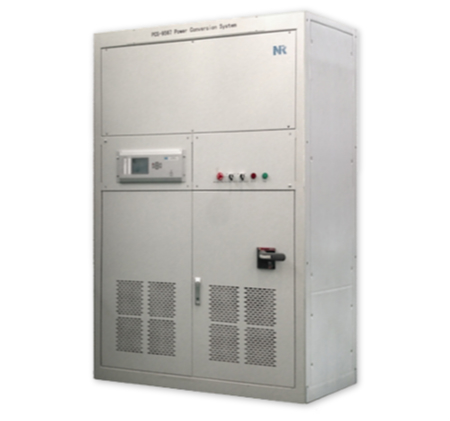HOME PRODUCTS Renewable & Microgrid Battery Energy Storage System
-
SERVICES
 NEWS
NEWS  EVENT CALENDOR
EVENT CALENDOR  CONTACT US
CONTACT US 
-
PCS-9567C BESS Control Unit
PCS-9567C BESS (Battery Energy Storage System) control unit is a device used for coordinated controlling multiple power conversion systems (PCS) and batteries in energy storage power station, it can not only improve the overall performance of the station, especially the transient performance, but also can control PCSs and batteries to reach an equilibrium state.
For a large-scale BESS with more than 32 PCS, it is appropriate to adopt a multi-level hierarchical control system which contains a master BESS control unit and multiple sub-BESS control units. The master BESS control unit is responsible for controlling all the sub-BESS control units and the sub-BESS control unit is responsible for controlling the PCSs.

- Features Function
-
The PCS-9567C BESS Control Unit has the following salient features:
The control unit is developed based on the high-performance and high-reliability UAPC platform and has a friendly human machine interface (HMI).
Modularized hardware design makes this device easily upgraded or repaired by a qualified service person.
Various advanced coordinated control functions ensure optimal performance of the BESS in a variety of grid applications to satisfy different needs of users.
By using the multi-level hierarchical control structure, it can easily apply to a large-scale BESS.
Proprietary communication technology and control algorithm enable the BESS to respond instantly and dynamically to local demands or dispatching instructions.
Support for various communication interfaces, such as RJ45, RS485, optical fiber, CAN, etc. So it is convenient to communicate with PCS, EMS/SCADA, and dispatch system.
The control unit is designed to withstand harsh climate conditions. It can adapt to high altitude applications <3000m.
Various advanced coordinated control functions
By controlling a group of PCSs, the PCS-9567C BESS Control Unit can achieve various advanced coordinated control functions such as Load Leveling, Power Tracking, Schedule, Frequency Regulation, Voltage Regulation, Fluctuation Smooth, etc.
(1) Load Leveling: Controlling the BESS charging during periods of light load on the power grid and discharging during periods of heavy load.
(2) Power Tracking: Controlling the output power of BESS and cooperating with power source to fast respond to dispatching instructions.
(3) Schedule: Making the BESS charging and discharging according to the pre-set schedule.
(4) Frequency Regulation: The BESS is charged or discharged in response to an increase or decrease of grid frequency and keeps it in the pre-set range.
(5) Voltage Regulation: The BESS absorbs or delivers reactive power in response to an increase or decrease of grid voltage and keeps it in the pre-set range.
(6) Fluctuation Smooth: Smoothing the power fluctuations of renewable energy sources such as wind and solar energy.
(7) Power Distribution: Coordinated control of the power of each PCS considering the state of charge (SOC) of BESS to maximize the utilization of the available energy capacity.
Powerful communication functions
Flexible communication modes are provided. 3 independent Ethernet interfaces and 2 independent RS-485 communication interfaces are provided. Power industry communication standard IEC60870-5-103 and new generation substation communication standard IEC61850 are supported.
Completed self-supervision and protection functions
Self-diagnosis ensures that corresponding alarm will be issued within 1 ms to indicate there are some errors in the device. A variety of improved protection functions protect the normal operation of the control unit.
The scope of self-supervision covers sampling unit, IO unit, communication unit and other related devices. It can detect the system internal fault and issue the corresponding alarm signal within 1ms, which can ensure the normal operation of the BESS system with a variety of improved protection functions.
Transient fault recorder function
The system can continuously record the signals before and after the fault. The recorded data files are stored in the shared directory of the operator workstation and can be used for fault analysis. The file format is the standard COMTRADE format.